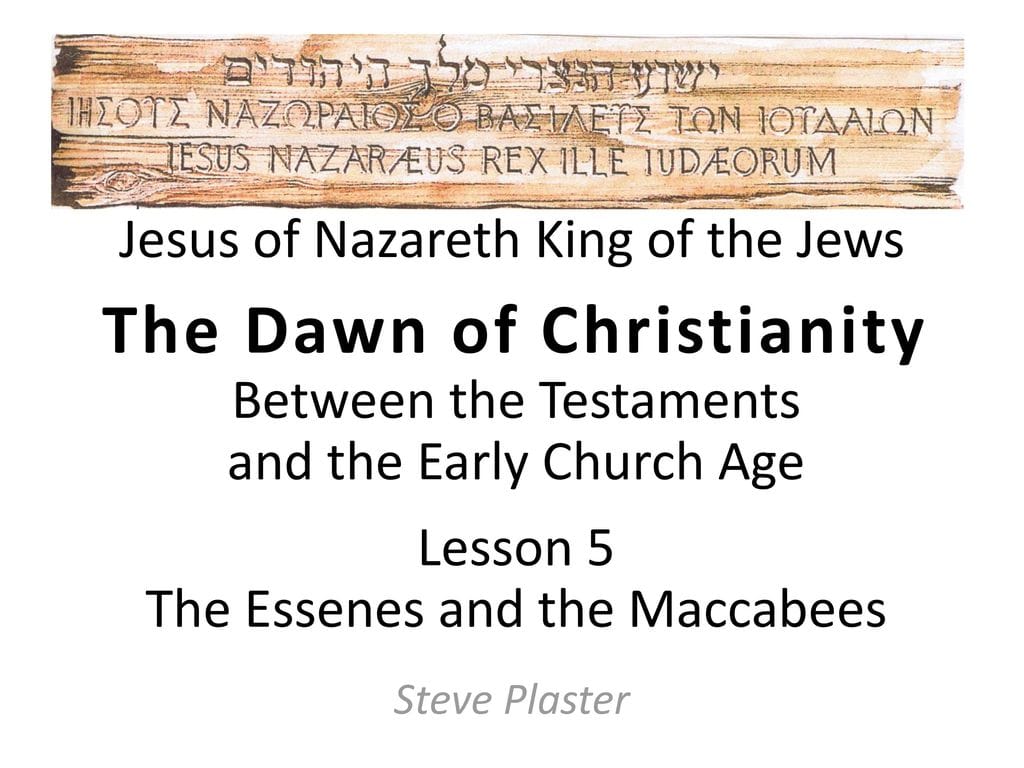Imagine the Judean desert 2,000 years ago, a place where a mysterious group known as the Essenes lived a life dedicated to piety and ritual purity. Now, imagine a young Jesus of Nazareth among them, absorbing their teachings and shaping his own worldview. This captivating possibility has sparked endless debate among historians and theologians, fueled by intriguing parallels between Jesus’ teachings and the Essenes’ beliefs.
Unraveling the Mystery: Jesus and the Essenes
While historical evidence definitively linking Jesus to the Essenes remains elusive, intriguing parallels in their teachings and lifestyles fuel ongoing debate and speculation. Both Jesus and the Essenes placed a strong emphasis on ethical conduct, believing that living a righteous life was paramount. Both seemed to reject the pursuit of material wealth and worldly possessions, focusing instead on spiritual growth and social justice. There are echoes of the Essenes’ apocalyptic expectations in Jesus’ teachings about the coming Kingdom of God, a time of judgment and renewal.
Could John the Baptist, a potential bridge between Jesus and the Essenes, hold the key to understanding the extent of their influence? John, a pivotal figure in Jesus’s life, shared striking similarities with the Essenes in his simple lifestyle, fiery preaching, and focus on ritual purity. It’s entirely possible that John had some connection to this group, which could have indirectly influenced Jesus.
The Dead Sea Scrolls: Clues from the Past
One of the most significant pieces of this historical puzzle comes from the Dead Sea Scrolls, ancient writings discovered near Qumran, a site strongly associated with the Essene community. These scrolls offer a glimpse into the Essenes’ beliefs, rituals, and daily life, revealing fascinating parallels to teachings found in the Gospels.
Examining the shared emphasis on ritual purity, apocalyptic expectations, and communal living provides valuable insight into the potential interplay between Jesus’ message and Essene thought. While the scrolls don’t mention Jesus directly, they provide a vivid backdrop for understanding the religious and social landscape in which he lived and preached. The Dead Sea Scrolls, offering a glimpse into Essene beliefs and practices, provide fertile ground for exploring the historical and theological context surrounding Jesus’ ministry.
Separating Fact from Speculation
It’s essential to recognize that no direct evidence confirms Jesus formally studied with the Essenes or had formal ties to the community. The Gospels, the primary source for Jesus’ life, do not explicitly mention the Essenes. The question of their influence rests largely on interpretation and circumstantial evidence.
However, the lack of definitive proof doesn’t diminish the significance of exploring this historical connection. By delving into the shared themes and divergent views, we gain a richer understanding of the diverse tapestry of Jewish thought in 1st-century Judea and the complex world that shaped both Jesus and the Essenes.
Did the Essenes Believe in the Messiah?
The question of the Messiah adds another layer of complexity to the relationship between Jesus and the Essenes. Like many Jewish groups of their time, the Essenes yearned for the arrival of a Messiah. However, their vision differed significantly from the figure Jesus embodied.
Evidence suggests that the Essenes, influenced by their experiences under Roman rule, anticipated a militant leader, a warrior-king who would liberate them from oppression and restore Israel to its former glory. Their concept of the Messiah focused on political and priestly liberation, contrasting sharply with Jesus’ message of spiritual salvation and the transformation of the human heart.
It is important to note that our understanding of Essene messianism is still evolving. The Dead Sea Scrolls, while offering valuable clues, present a complex and sometimes ambiguous picture. Some scholars interpret passages within the scrolls as evidence that the Essenes believed in not one, but two Messiahs: a priestly Messiah descended from Aaron and a kingly Messiah descended from David.
Unearthing Jesus: Examining the Historical Evidence
While the possible connection to the Essenes offers a fascinating avenue for exploration, it’s crucial to consider the broader question of historical evidence for Jesus’ existence.
- The Gospels: While faith-based narratives, the Gospels provide valuable insights into Jesus’ life, teachings, and the early Christian movement.
- Roman and Jewish Historians: Writings by non-Christian figures like Josephus and Tacitus corroborate the existence of Jesus and his crucifixion under Pontius Pilate, placing him firmly within a specific historical context.
- Archaeological Evidence: While no artifacts directly linked to Jesus have been found, ongoing archaeological discoveries in 1st-century Palestine continue to illuminate the world in which he lived.
The Enduring Enigma
The question of whether Jesus studied with the Essenes remains an unsolved mystery, a source of ongoing research and debate within scholarly circles. However, by carefully examining the available evidence, acknowledging both the parallels and the discrepancies, we can gain a deeper appreciation for the rich tapestry of religious and social movements that characterized 1st-century Judea, the world that gave rise to both Jesus and the Essene movement. The search for answers continues, fueled by each new discovery and the enduring power of these ancient mysteries.












